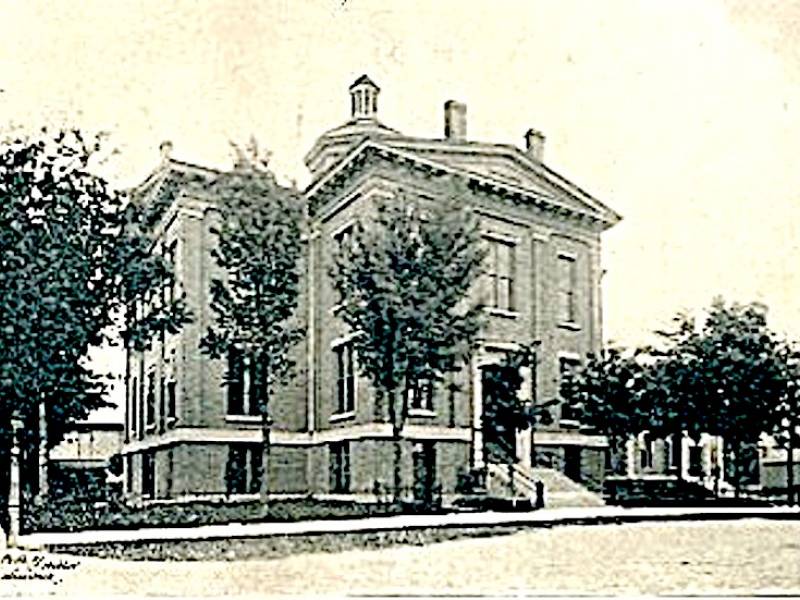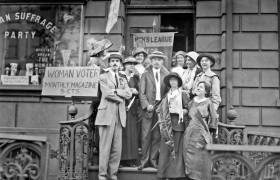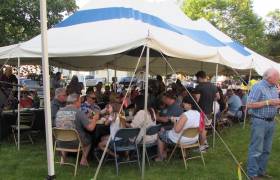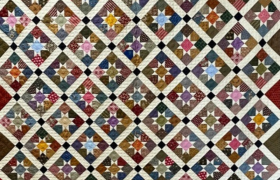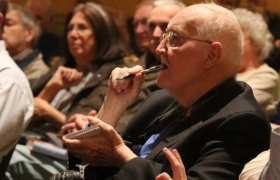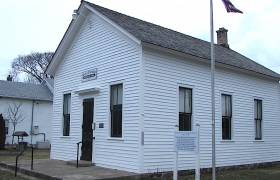The Correspondence of Harley Wayne
Friends of the Old Courthouse Dusty Boots Tour
On Saturday, May 13, 2023 the Friends of the Old Courthouse will host its last Dusty Boots tour before the courthouse and sheriff’s house reopen to the public.
The event caps a multiyear project that defied explanation when the city of Woodstock committed to saving the 166-year-old building.
Aaron Holverson, senior partner and project architect for Studio GWA in Rockford, recently presented an overview of the estimated $16.3 million project to the Northern Illinois Historic League.
Higher material costs and change orders – including a geothermal field underneath a parking lot across the street – contributed to the rising price tag. But as tenants prepare to set up shop, the iconic building, at last, seems to be finding its footing.
“This is an anchor for the downtown. It is a face for the downtown. This is the primary thing that people will see,” Holverson said. “This site is the backdrop of so many people’s lives.”
It wasn’t until 2020 that workmen “dove headlong” into the renovation, he said, and construction did not fully start until March 2022. Chief among their priorities was finding solutions to the perpetual challenge to old buildings: water infiltration.
“Water and plaster do not mix well,” Holverson said.
When workers began shoring up the ceiling of the former second-floor courtroom, they uncovered a wood panel ceiling covered by a layer of painted canvas, horse-hair plaster and lath.
“Nothing was broken up or removed over the years. A lot of character still existed,” Holverson said. “There was a lot of stenciling throughout the space, and that is part of what will be reflected in the new ceiling going forward.”
The original ceiling sustained too much water damage to save, but the city opted to re-create the original stenciling on new wood that matches the original.
Any intact portions of the ceiling were salvaged. Also, workers recycled all of the bricks removed to accommodate the elevator to make repairs and reused many of jail cells as components throughout the building.
“As we started to peel back the layers, there were more and more things recovered,” Holverson said.
That list includes some 1910 newspapers; a radius window in the courtroom; steel plates in the floor; and a 12-foot-by-14-foot black space filled with large boulders and stone, which was emptied by hand and incorporated into the downstairs restaurant.
In addition to restoration, another focus has been accessibility. A larger women’s restroom was installed to better serve the former courtroom-turned-event space. A brass and wood guardrail was added to the grand staircase for safety. Plans also include an elevator and a rear staircase. But more than that, Studio GWA had the task of trying to align the three floors in each building, none of which meshed with one another.
“We had six levels but three floors,” Holverson said. “That’s not great for access. … It looked like a squirrel’s nest, a complete spiderweb of stairs.”
None of this would have been possible without a financial commitment by taxpayers and creative funding that relied on a tax increment financing district, bonds and tax credits.
Studio GWA said that historic tax credits can be used to boost equity in a project, making it more feasible in the eyes of a bank. They can be applied to hard costs, such as demolition and construction within the building envelope, and soft costs, such as legal fees, architectural and engineering fees, the developer fee and more.
“From the time we started this project to the time that we began construction, eight similar buildings in similar downtowns were torn down in the state of Illinois,” Holverson said. “This [courthouse project] is not something that is typical. It’s kind of a perfect storm of a willing council and the city staff’s approach to this. They’re forward-thinking in many ways.
“It shows that a project like this is possible. And to have it be financially viable is an incredible feat, and I commend the city for taking it on. Every time we tear something down, we lose a part of history we don’t get back. I would say that new is not better in most cases.”
The Old Courthouse on Woodstock’s Square is one of few remaining pre-Civil War courthouse buildings in Illinois. The sheriff’s house was added in 1887. The property was listed on the National Register of Historic Places in 1974.
“There are so many character-defining spaces. Inserting something as significant as an elevator was a challenge. Everything interrupted something else,” Holverson said. “It was kind of a nightmare, but we managed to work it out.”
The 45-minute Dusty Boots tours run from 11 a.m. to 1 p.m. To register, go to signup.com/client/invitation2/secure/25276195207/false#/invitation.
• Kurt Begalka, former administrator of the McHenry County Historical Society & Museum in Union.
Published May 7, 2023, in the Northwest Herald
 © 2024 MCHS- All Rights Reserved.
© 2024 MCHS- All Rights Reserved.

